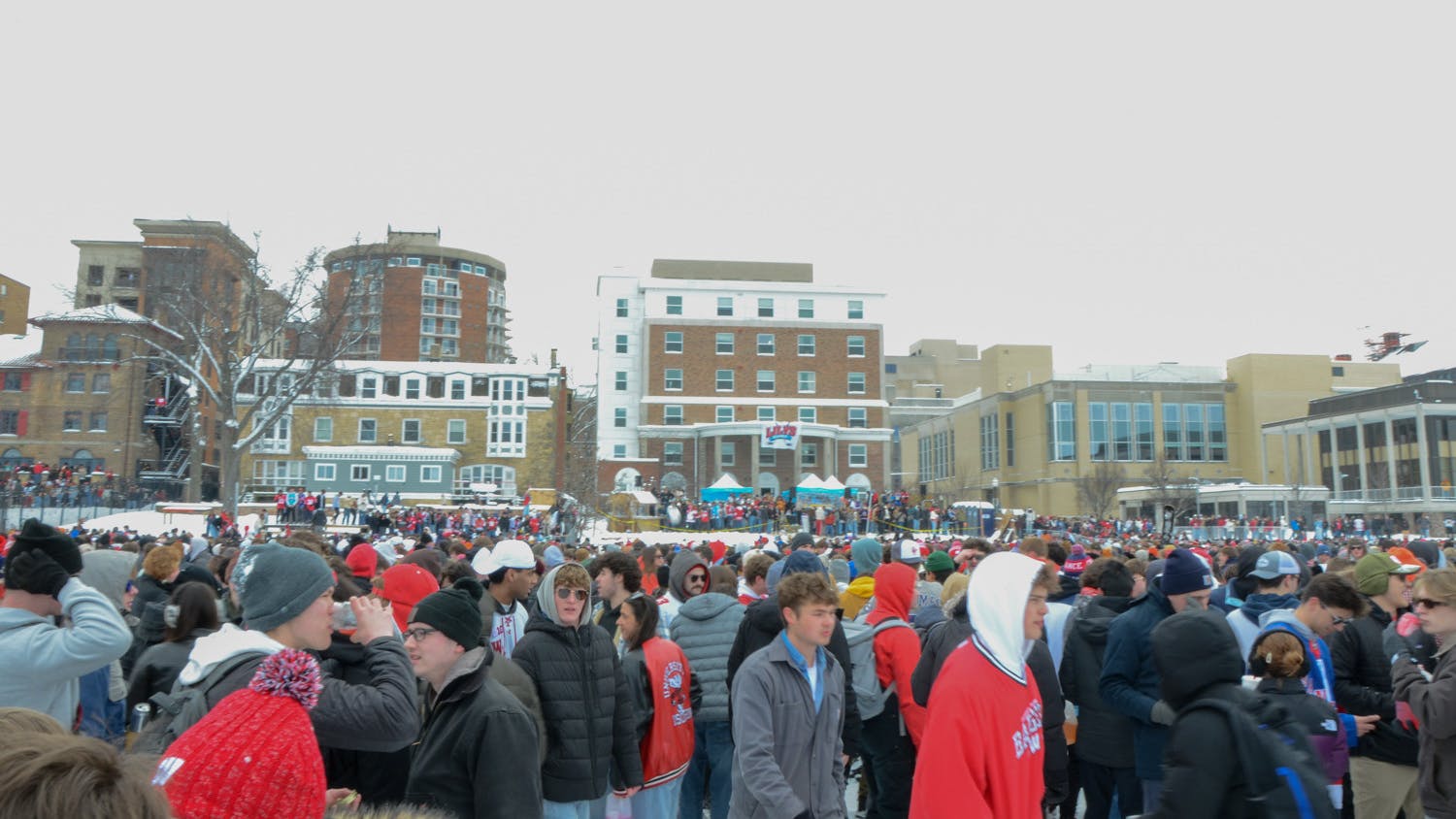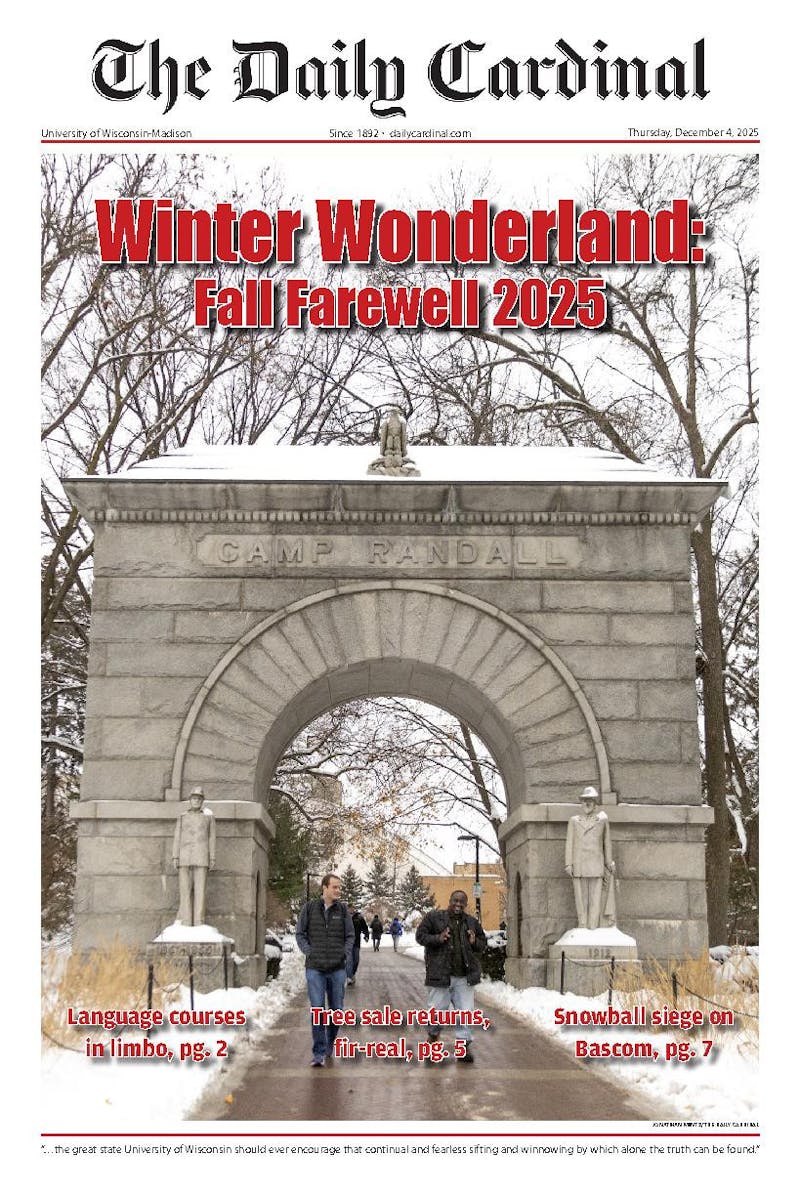Six to eight dogs the size of wolves, all strapped together with leather harnesses, their ears pricked up and jaws open wide, barreling down a trail of powdery snow and dragging a sled behind them. They're moving as fast as they possibly can, oblivious to the sled rider's directions or cries to slow down â_ it takes a metal hook driven into the ground to finally stop their run.
It's that sense of speed, combined with a true affection for the often-crazy animals that produce it, that lures so many people into the sport of dog sledding. While most well known from Jack London's elemental novels and epic Alaskan races such as the Iditarod, the sport has a thriving base of support in Wisconsin thanks to some dedicated groups.
""You get all kinds of people, but everyone has a couple things in common—they're very passionate about what they do and their animals,"" said UW-Madison junior Jenna Dittmar. Dittmar has been sledding for 14 years and is a member of the Wisconsin Trailblazers organization.
Dog sledding, although not the most common of winter sports, is one that generates a highly motivated group of followers. Mushers, as dog sled racers are called, raise their dogs from pups and socialize them their whole lives, giving them the best nutrition and training they can. This care leads to a particular attachment to the dog, as well as a desire to see them perform.
""The dogs are so into running ... it's just infectious,"" said John Thiel, president of the Northern Wisconsin Dog Mushers Association and head of the tour group Wolfsong Adventures in Mushing. ""Their energy and their enthusiasm becomes part of the musher.""
Dittmar said there are many types of races, depending on the skill of riders and the number of dogs. Races like the Iditarod are the longest, but more common are middle-distance races ranging from 60 to 200 miles and sprint racing that averages a mile a dog. Open-class races have an unlimited number of dogs and go for speed over distance, while the ambitious can participate in skijouring—putting on cross-country skis and strapping themselves to a couple of dogs.
Thiel said that while there are some people who race passionately and ""design their lives"" around the races, for most competition isn't a priority. ""Half the people there don't have a prayer of winning, but they do it because it's fun,"" Thiel said.
Jan Bootz-Dittmar, president of Wisconsin Trailblazers, said that this year the group has introduced Dryland racing, which takes place in the fall season before the snow. In these events, mushers replace the sleds with specially made scooters and carts, strap dogs to a bicycle and start pedaling (known as bikejoring) or run alongside the dog down a path (canicross).
While not inherently dangerous, the sport is not for the faint-hearted. The dogs are often so caught up in the act of running they often ignore directions, and the more dogs used the less control the musher has. ""The average sled dog is ... very in the moment,"" Dittmar said.
To become familiar with the dogs, the recommended course of action is to simply attend one of the races and start meeting people. Attendees at the race include breeders who run kennels with dozens of dogs, professional racers who have run Iditarod-length races and people who have been running for decades—all willing to share their experience.
""Once you go there and say you're interested, everyone's going to want to talk to you,"" Dittmar said. ""It's a community that keeps people interested and draws more people into the sport.""
Thiel said there are a lot of opportunities for getting involved with the animals, usually by helping a racer ready the dogs. With the dogs' energy level is at a peak before the race, each sledding team needs four or five people to get the sled prepared and moved to the starting line. From there, they can develop a relationship with the musher and get additional instruction, possibly even borrowing the dogs for a run.
It may take patience, but mushers say the art of sled dog racing turns into one of the most rewarding sports ever—largely because of the support from the dogs themselves.
""When you have the dogs you know them very well and get their satisfaction,"" said UW-Madison sophomore Kerry Langin. ""They love it and it teaches you to love it.""
To become involved with dog sledding in Wisconsin, visit the Northern Wisconsin Dog Mushers Association at http://www.nwdma.net/ or the Wisconsin Trailblazers at http://www.witrailblazers.org. Information on other races can be located at http://www.sleddogcentral.com.
Upcoming Dog Sled Races
Merrill, WI January 13-14, 2007
Antigo, WI January 27-28, 2006
Land O' Lakes, WI. Feb. 3-4, 2007
Medford, WI Feb. 9-10, 2006





